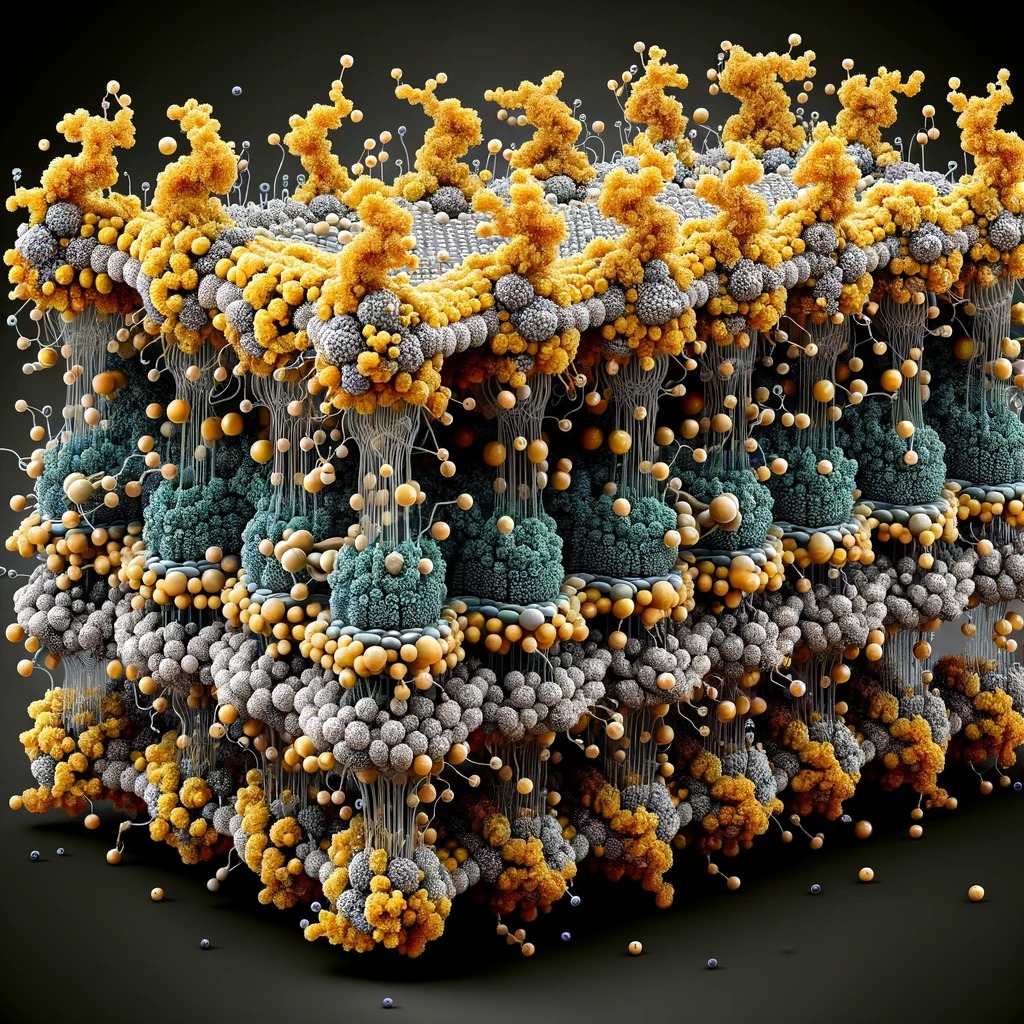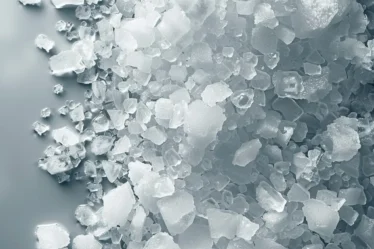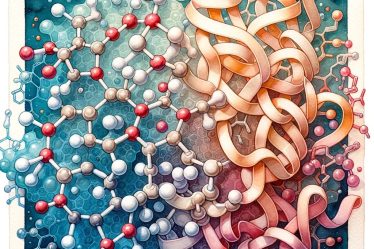
Welcome to the fascinating world of amphiphilic molecules, a topic that, while it may sound complex, is quite integral to both our understanding of chemistry and many aspects of our daily lives.
In this comprehensive guide, we will delve deeper into the structure, types, roles, and applications of amphiphilic molecules. We’ll also explore how learning about these molecules can be facilitated through classes, tutoring, and private lessons, making this seemingly complex topic accessible and understandable for everyone.
Read more topics and expand your chemistry horizons! Our World of Chemistry offers a plethora of free educational blogs.
Here’s a Glimpse of What You’ll Learn About Amphiphilic Molecules
- Understanding Amphiphilic Molecules: Exploring their hydrophilic and hydrophobic properties.
- Amphiphilic vs Amphipathic: Learning the differences and similarities.
- Biological Significance: The role of amphiphilic molecules in cell membranes and lipid bilayers.
- Industrial Applications: Their use in detergents, pharmaceuticals, and nanotechnology.
- Chemistry Education: How tutoring and classes enhance comprehension of amphiphilic molecules.
- Advanced Research: Exploring peptide amphiphiles and material science innovations.
Amphiphilic Molecules Introduction: Understanding the Basics
Amphiphilic molecules are unique chemical compounds that contain both hydrophilic (water-loving) and lipophilic (fat-loving) properties. This dual nature is what makes these molecules so interesting and important in various scientific and industrial applications.
The lipophilic group of an amphiphilic molecule typically consists of a large hydrocarbon moiety, such as a long chain of carbon and hydrogen atoms. This part of the molecule makes it ‘fat-loving,’ allowing it to interact with or dissolve in non-polar substances. On the other hand, the hydrophilic group can be either charged or uncharged, enabling the molecule to interact with or dissolve in water.
One of the most common and significant examples of amphiphilic molecules in nature is phospholipids, the main components of biological membranes. These membranes are critical as they structure cells and facilitate the passage of nutrients and wastes. The arrangement of phospholipids in a lipid bilayer structure perfectly illustrates how amphiphilic molecules function, with their hydrophobic tails pointing inward and hydrophilic heads facing the external aqueous environment.
Additionally, most fatty acids in cell membranes are unsaturated, which adds flexibility to the membrane, allowing it to permit specific molecules to pass through while acting as a barrier for others. In animal cells, cholesterol is inserted between these non-polar chains, comprising about 20% of the membrane’s molecules, adding rigidity and strength.
Amphiphilic Molecules Structure: Hydrophilic and Hydrophobic Parts
Diving into the structure of amphiphilic molecules, we find a fascinating blend of components that define their unique behavior and function. These molecules are like nature’s puzzle pieces, fitting perfectly into various environments due to their dual characteristics.
Amphiphilic Molecules Hydrophilic Components: Characteristics and Examples
An amphiphilic molecule’s hydrophilic (water-loving) part makes it soluble in water. This portion can be charged or uncharged. Charged functional groups like the ammonium group may be positive or negative, such as phosphates and sulfates. Uncharged groups include substances like alcohol. These hydrophilic parts are crucial in how these molecules interact with their environment, especially in water-based solutions.
Amphiphilic Molecules Hydrophobic Components: Properties and Examples
Contrastingly, these molecules’ lipophilic (fat-loving) part typically comprises a large hydrocarbon chain. This part is non-polar, meaning it does not mix well with water but can dissolve in non-polar substances like oils and fats. The hydrocarbon chains in amphiphilic molecules vary in length and complexity, but they share the common trait of being water-repellent (hydrophobic).
The interaction between amphiphilic molecules’ hydrophilic and hydrophobic parts is key to their function. For instance, in biological membranes, these molecules arrange themselves to shield their hydrophobic tails from water while the hydrophilic heads interact with the aqueous environment. This unique arrangement is essential in forming cell membranes and other biological structures.
Table 1: Comparing Hydrophilic and Hydrophobic Components of Amphiphilic Molecules
|
Component |
Characteristics |
Examples |
|
Hydrophilic |
Water-loving can be charged or uncharged |
|
|
Hydrophobic |
Water-repelling, typically made of hydrocarbons |
Oils, fats, long hydrocarbon chains |
Amphiphilic vs Amphipathic: Comparing Molecular Properties
When delving into the study of molecules with dual affinity, it’s crucial to differentiate between amphiphilic and amphipathic molecules. Although these terms are often used interchangeably, they have distinct meanings that are important to understand.
Amphiphilic and Amphipathic Molecules: Key Differences
The primary difference lies in their relationship with water and fats. As we’ve discussed, amphiphilic molecules possess hydrophilic (water-loving) and lipophilic (fat-loving) properties. This dual nature allows them to interact with water and fat molecules, making them versatile in various environments, such as cell membranes, where they form a barrier that regulates the passage of substances.
On the other hand, amphipathic molecules also contain hydrophilic and hydrophobic (water-repelling) components, but the term is often used in a broader sense. It refers to molecules that have a distinct separation of these properties, allowing them to interact with polar and non-polar substances. This characteristic is significant in biological processes, where these molecules play a role in maintaining the structure and function of cells and organelles.
Critical Differences Between Amphiphilic and Amphipathic Molecules
- Amphiphilic molecules have both hydrophilic (water-attracting) and hydrophobic (water-repelling) parts that are not clearly separated.
- Amphipathic molecules have hydrophilic (water-attracting) and hydrophobic (water-repelling) regions that are distinctly divided.
- Amphiphilic molecules help form structures like micelles and emulsions, while amphipathic molecules are essential for cell membranes and other biological functions.
Understanding the subtle differences between these two types of molecules can be a bit challenging for students starting their journey in chemistry. This is where personalized tutoring and lessons can be highly beneficial. A private teacher or tutor can provide tailored explanations and examples, making it easier for students to grasp these concepts and apply them in various scientific contexts.
Learn about chromatography and solutions and mixtures.
Amphiphilic Molecules in Nature and Technology
The unique properties of amphiphilic molecules make them vital in natural systems and various technological applications. Let’s explore how these molecules play crucial roles in different contexts.
Biological Systems and Amphiphilic Molecules: A Study of Lipid Bilayers
Amphiphilic molecules are crucial in forming cell membranes, particularly in the structure of lipid bilayers. These layers, made primarily of phospholipids, are essential for:
- Creating a protective barrier for cells.
- Allowing selective transport of substances.
- Ensuring efficient interaction with the cell’s water-based environment.
Industrial Applications of Amphiphilic Molecules: From Detergents to Pharmaceuticals
In industry, the dual nature of amphiphilic molecules is utilized in:
- Detergents and soaps for their ability to clean by interacting with water and oils.
- Pharmaceutical formulations to improve drug solubility and effectiveness.
Amphiphilic molecules thus serve as a bridge between water and oil, indispensable in various applications. Tutoring and private chemistry lessons can be especially helpful in grasping these concepts.
All you need to know about vitamins and minerals.
Chemistry Education and Amphiphilic Molecules: Enhancing Understanding
The study of amphiphilic molecules is integral to chemistry education, offering students a window into the complex interactions in natural and synthetic environments.
Learning Amphiphilic Molecules: The Role of Tutoring and Private Lessons
The concept of amphiphilic molecules in biochemistry can initially seem daunting for students due to their complex behavior and diverse applications. However, effective teaching methods, including tutoring and private lessons, can significantly enhance understanding. A tutor or private teacher can provide individualized attention, breaking the concepts into more straightforward, manageable parts. This personalized approach is particularly beneficial when tackling the intricacies of molecular structures and their functions.
In classrooms and tutoring sessions, practical examples and real-life applications of amphiphilic molecules can bring the subject to life. For instance, discussing how these molecules make up cell membranes or how they function in detergents can make the learning experience more relatable and engaging. Students can better appreciate the relevance and importance of amphiphilic molecules in various scientific fields by connecting theoretical concepts to everyday phenomena.
Are you looking for a chemistry tutor? Enter “chemistry tutor Glasgow” or “chemistry teacher Sheffield” on your preferred tutoring platform, such as meet’n’learn, to find a teacher who can meet your specific needs.
If you thrive in group learning environments, search “chemistry classes London” or “chemistry lessons Manchester” online to discover local schools offering chemistry lessons.
Research Advances in Amphiphilic Molecules: Peptides and Materials Science
Amphiphilic molecules are fundamental to understanding basic chemistry concepts; they are also at the forefront of advanced research and innovation.
Peptide Amphiphiles in Drug Delivery: Breaking New Ground
In medicine, peptide amphiphiles are gaining attention for their potential in drug delivery systems. These molecules can form nanofibers that encapsulate and steadily release drugs, improving the effectiveness of treatments. This area of research is promising for developing new therapies, especially for targeted drug delivery, making medicines more efficient and reducing side effects. Read more about the peptide bond.
Material Science and Amphiphilic Molecules: Innovative Applications
In materials science, amphiphilic molecules have exciting applications in creating advanced materials with unique properties. These include self-assembling nanomaterials and responsive surfaces that change properties in response to environmental stimuli. The potential of these materials extends to various sectors, from electronics to ecological technologies.
Amphiphilic Molecules and Further Exploration
In conclusion, studying amphiphilic molecules offers a fascinating glimpse into the complex interactions between molecular structures and their environments. Amphiphilic molecules are a cornerstone of basic and advanced chemistry, from their crucial role in forming biological membranes to their diverse applications in industries and cutting-edge research.
For students and enthusiasts, understanding these molecules can open doors to a deeper appreciation of the chemical world. Remember, if you find certain concepts challenging, seeking help through tutoring or private lessons can effectively enhance your understanding.
As you continue your journey in chemistry, consider exploring more about these remarkable molecules and their myriad applications. The world of amphiphilic molecules is vast and full of potential, waiting to be discovered and understood.
Are you interested in other subjects? Read top free study guides for Biology, English, French, and Music.
Frequently Asked Questions About Amphiphilic Molecules
1. What Defines Amphipathic Molecules?
Amphipathic molecules possess hydrophilic (water-attracting) and hydrophobic (water-repelling) parts, crucial for their role in cellular structures and membrane formation.
2. How Do Amphiphilic Lipids Function in Biological Membranes?
Amphiphilic lipids, primarily phospholipids, form the lipid bilayer in cell membranes, essential for cell protection and substance regulation.
3. Can You Classify Each Molecule as Hydrophilic, Hydrophobic, or Amphiphilic?
This classification depends on the molecule’s affinity towards water and fats, with amphiphilic molecules showing dual affinity.
4. What Are Some Examples of Amphiphilic Detergents?
Common amphiphilic detergents include synthetic surfactants used in cleaning products, exhibiting properties that interact with water and oils.
5. How Are Peptide Amphiphiles Used in Medicine?
Peptide amphiphiles are being explored for advanced drug delivery systems, improving the targeting and effectiveness of pharmaceuticals.
6. What Makes Phospholipids Amphipathic?
Phospholipids are amphipathic due to their hydrophilic head groups and hydrophobic fatty acid tails, forming the structural basis of cell membranes.
7. Why Are Amphiphilic Molecules Significant in Nanotechnology?
Their ability to self-assemble and interact with diverse substances makes amphiphilic molecules key in developing innovative nanomaterials.
8. How Can Studying Amphiphilic Molecules Benefit Chemistry Students?
Learning about amphiphilic molecules helps students understand complex biological and chemical interactions, and tutoring can further enhance this comprehension.
Learn everything you have to know about greenhouse gases and nuclear fusion.
References:
1. ThoughtCO
2. ChemLibreTexts
3. Wikipedia



